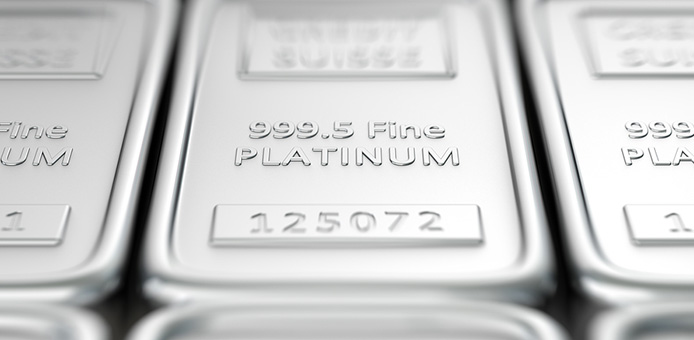
Platinum is one of the purest precious metals on earth, but it’s more common on the moon than our planet. It is the least reactive metal known to man and has an extremely high melting point, which makes it very useful in a host of industrial applications. However, investment in platinum metal does not have as long a history as gold or silver. 1
What Is the History of Platinum?
Early History
Platinum has been found in objects that date from 700 BC, most notably as a coating for the Egyptian sarcophagus known as The Casket of Thebes. 2 For 16th century Spanish conquistadores, platinum was an impediment in the search for gold. In the 18th century, European scientists began studying the metal in earnest and were originally confounded by its properties, such as a high melting point and a resistance to corrosion. 3
Yet it was not until the 19th century that English scientists finally developed a means of refining platinum and discovered palladium, rhodium, osmium, iridium, and ruthenium. Platinum and these other metals all sit near each other on the Periodic Table and are known together as the Platinum Group Metals, or more commonly as PGMs. 4
Modern History
Colombia, Russia, and Canada were once the main sources of platinum for the world. With the 1924 discovery of the Bushveld Igneous Complex, South Africa took over from Canada as the leading global producer of PGMs by the 1950s, a position the country retains today. 5 South Africa produces roughly 75 percent of the platinum currently mined globally.
Since the Second World War, platinum has become increasingly important as an industrial metal. Some of its more important early uses were as catalysts in the oil refining industry and as a feedstock for plastics. Jewelry production began in the 1960s in Japan, which then spread globally in the following decades until today, when platinum jewelry is popular the world over. 6
Further refinements in industrial uses as well as a global awareness of the problems of pollution from hydrocarbons gave rise to the development of the catalytic converter in the 1970s, in which PGMs again were used as catalysts. 7 In the 1990s, platinum began to be used in anti-cancer drugs, expanding the metal’s usefulness even more. 8
When Did Platinum Become Popular as an Investment?

While platinum coins sometimes served as currency in Russia during the 19th century, widespread use of platinum bars and coins did not begin to take hold until the 1970s. The oil crisis and the widespread economic uncertainty it fostered drove precious metals prices higher, at which point production of platinum bars began in Japan and Europe. The introduction of the British Isle of Man Noble Platinum Bullion Coin in 1983 was viewed as a strong success, and soon Australia and Canada followed suit. Finally, in 1997, the U.S. Mint introduced the Platinum American Eagle coin. It remains the only platinum bullion coin the U.S. government guarantees for weight, content, and .9995 purity.
In the early 2000s, exchange traded funds (ETFs) became increasingly popular, especially for precious metals. Platinum ETFs, such as PPLT and PALL, have been popular with the investment community and have increased overall demand for PGMs.
Is Platinum a Good Investment?
Investing in platinum can diversify one’s portfolio. Like other precious metals, platinum is viewed as having a negative correlation to stocks and bonds, which makes it a far more powerful source of diversification against the risk of economic uncertainty. In addition, platinum’s industrial uses now include the production of fuel cells, which are one of the power train options for electric cars. This recent presentation 9 from the World Platinum Investment Council sums up the current market opportunity in platinum.
Platinum and the rest of the PGMs are the “youngest” of the world’s precious metals, in terms of their recognition by society for their usefulness. Yet platinum is important to the global economy and, as one of the rarest metals in the world 10, is increasingly important as a source of investment.

